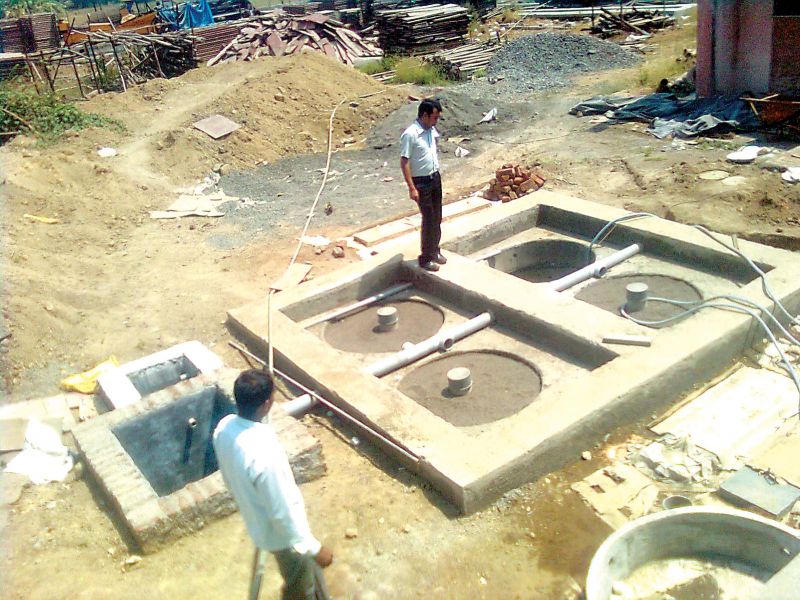Rain god's bounty goes right down the drain

The monsoon may have lifted us out of a near-drought situation, but to Bengaluru it was another opportunity lost. The ample rainfall could have recharged the groundwater table but authorities have little interest in rainwater harvesting. It seems Bengaluru will continue to remain dependent on Cauvery water, which is pumped 85 km from Mandya at great expense. Experts say that rainfall is enough to meet the city's water needs if RWH is done intensively at all households and public spaces. So what are waiting for, asks Team DC.
The monsoon, which started off poorly, has drenched the city since mid-August, giving it the heaviest rain for the month in a long time. While in a normal year Bengaluru receives 126 mm of rain in August, this year it recorded 249 mm during the month. But if you thought this excess rain could help its requirements in the long term, you thought wrong as very little is being done to store the water , which is merely draining away, leaving Bengaluru’s falling water table as low as ever.
With little scientific planning to conserve the water, the long suffering low lying areas of the city are bearing the brunt of the deluge as always, with their roads being flooded and water entering homes, leaving furniture and equipment damaged.
As little progress has been made in Rain Water Harvesting, the city does not have the mechanism yet to let the rain water seep into the ground to any significant extent and rejuvenate its water table.
Although the BWSSB expects around 1.4 lakh properties to opt for RWH, only around 73,000 have done so, leaving the city without the structures it needs to absorb rain water.
And neither does Bengaluru have the many lakes that it had in the past to help the process as real estate sharks and even the government have taken over many of them in the so-called march towards development.
Lamenting the lost opportunity presented by the present deluge, water expert and founder member of the People's Campaign for Right to Water, Kshitij Urs notes that it has rained heavily from mid- August in the city. “But where is the rain water ? With no proper planning in place, all of it has simply drained away," he regrets, also pointing out that the city, which is spread over 800 sq.kms, receives around 15 to 17 TMC of rain every year and allows most of it to go down the drain, leaving it at the mercy of water sources far away to meet its people’s needs.
The activist believes that RWH must be taken seriously, and rain water recycled and used for Bengaluru’s needs, to help it become less dependant on water pumped over long distances from the river Cauvery to its homes.
Mr Kshitij also calls for reviving the existing lakes and systematically creating new ones. “Just like how new parks, playgrounds and roads are developed, the government needs to develop new lakes,” he suggests.
But ask a BWSSB official about the poor response to RWH in the city and he claims it has been doing its best to popularise it through the Rain Water Harvesting theme park at Jayanagar, through NGOs, the Bharat Scouts and Guides and street plays.
“We have also been penalising those who do not install RWH. Since July last year, we have collected over Rs 7.6 crore from defaulters,” he adds.
Rained twice the average
- In a normal year Bengaluru receives 126 mm rain in August, but this year it received 249 mm during the month.
- Water experts say if rain water harvesting (RWH) is done on a big scale, the city may not see any flooding in rain.
- In 2009, BWSSB made it mandatory for all existing buildings on 60x40 feet sites and upcoming ones on 30x40 feet plots to go in for rain water harvesting
- The water board claims it is organising street plays and doing awareness campaigns through seminars and workshops to popularise RWH.
36 TMC of rainfall each year and not a drop is saved!
Until 2010 Bengaluru relied on the Thippagondanahalli (T G Halli) reservoir too for its drinking water, but sadly, it became so polluted eventually that it had to stop using it for its people and began to rely even more heavily on the Cauvery river to meet their needs.
Currently, the BWSSB draws 19 TMC of water from the Cauvery river every year for Bengaluru, but its needs are only growing owing to its rising population. Seeing the city’s water troubles, experts are now increasingly calling for rain water conservation, revival of its lakes, and recycling of its sewage to meet its needs.
Water expert, Vishwanath S, believes that everything is not lost where the T.G. Halli reservoir is concerned and suggests that the catchment areas of Arkavathy and Kumudvathi be improved for its benefit.

“The Cauvery Niravari Nigam Limited desilted over 380 lakes, constructed canals along the Arkavathy river and completed over 50 per cent of the work necessary for its revival. But reviving a river is a slow process and needs constant attention, which it isn't receiving," he regrets.
Going by him if the T.G. Halli and Hessarghatta reservoirs are rejuvenated, it will reduce some of the burden on the river Cauvery and add 35 million litres of water per day (MLD) to the city’s water supply.
As for rain water harvesting, he notes that Bengaluru receives over 36 TMC of rain annually, which is almost double the water the BWSSB draws from the Cauvery every year. “Although the city receives enough rain to become self- sufficient in water, the government isn't paying enough attention to harvesting it," he regrets.
Captain Raja Rao, Former irrigation secretary: What stops BWSSB from harvesting rain?
What could have been a blessing for the city has turned out to be a curse due to poor planning. Bengaluru has recorded a good amount of rain since August, but while this could have been a blessing to its defunct borewells, the water was just allowed to flow down the drain instead.
The BWSSB, which is the entrusted with the task of encouraging citizens to taken to Rain Water Harvesting (RWH), has been performing very poorly on this front. And the government, which should be leading the way, has itself not introduced it in its buildings.
In my view every household in the city must opt for RWH and every park, playground, empty site and road junctions should have RWH structures installed. If the government is not willing to spend money on this, let it get multinational and private companies to help it as part of their corporate social responsibility . If this is done, it will be of great help in recharging the falling groundwater levels in the city.
In many areas the water table has fallen so low that you don’t find water even after digging upto around 800 feet. This only reflects how much the groundwater in the city is being exploited in the absence of a proper monitoring mechanism.
Rain Water Harvesting if done comprehensively will help rejuvenate all the borewells in the city. The government should make this happen in a matter of one or two years and create small water bodies, besides rejuvenating irrigation tanks.

